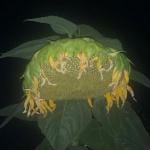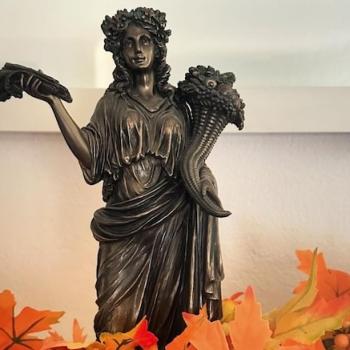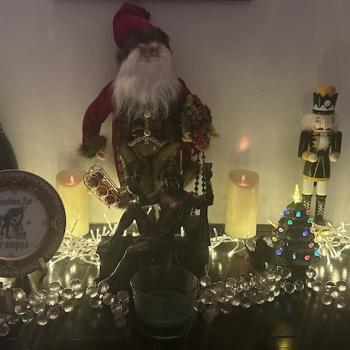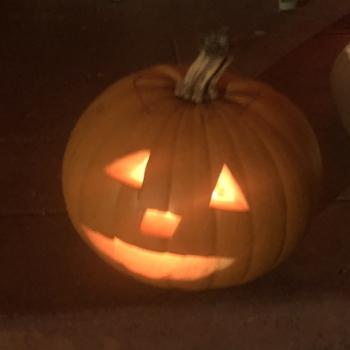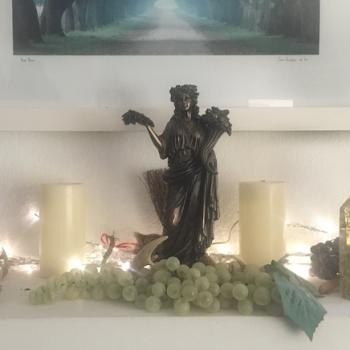Over the years my affection (and/or disdain) for “Mabon” as a name for Autumn Equinox has waxed and waned. The last couple of years I’ve decided that while not a huge fan of it, there’s probably not much that can be done to change it. (Full disclosure, the word “Mabon” is featured on the cover of my latest book-The Witch’s Wheel of the Year: Rituals for Circles Solitaries & Covens.)

In 2017 while feeling especially snarky I posted a fake history of the holiday on my Facebook page. Most people laughed and realized rather quickly what I was doing, being silly. Others thought it was necessary to correct me because apparently I’m some kind of idiot. A few folks warned me that people might take my parody of the sabbat seriously, and that I was probably spreading disinformation unintentionally (and those fears were not unfounded, that did happen on a few occasions).
Due to the mostly positive reaction to my snarky Mabon history, I wrote an equally absurd history of Samhain. By Yule I had people actively waiting to see what I would come up with. As the months rolled on I completed what my friends and followers had now decided was the BroWitch Wheel of the Year.
So enjoy this silly, though serious sounding, romp through the Wheel of the Year. Just remember, none of it is true, and you should not quote me on it any of it (unless you are doing stand-up comedy).
MABON
Traditionally, Mabon, the celebration of the Autumn Equinox amongst the Celts, is the most delightful and joyous of all the sabbats. It was a celebration of the harvest and the coming fall.
Mabon is an ancient Celtic holiday and translates as “good enough,” from the root words “mah” (or “meh”) which means “unexceptional” and “bon” which translates as “good” (just like the word does today in modern French).
Upon clearing the fields work supervisors would often comment “meh bon” meaning the work had been “good enough.” Most laborers were in such a hurry to get to the feasting and drinking at Mabon that their work was often a bit lacking.
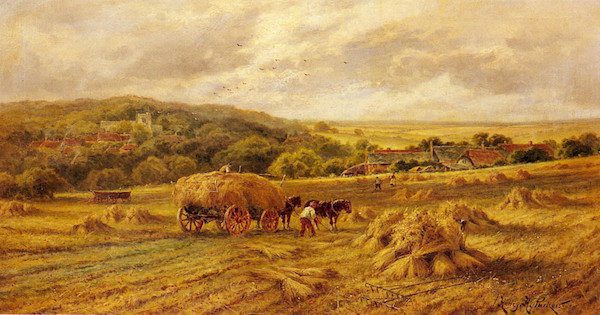
The food most associated with Mabon among the ancient Celts was the pumpkin. Many of the foods on the Mabon table were made out of this versatile fruit. Pumpkin was even used to flavor an autumn beverage made with milk and a variety of spices.
The most sacred animal at most Mabon celebrations was the turkey. Turkeys were known for their wisdom and beauty and were seen as harbingers of the Fall due to their impressive tail feathers resembling the color of autumn leaves. Later, Christians would make turkeys the centerpiece of their Autumn meals in order to antagonize and infuriate their Pagan neighbors who honored, but did not eat, turkeys.
Games were a part of most Mabon celebrations. One of the most popular involved a baby pig who was fought over by two teams. Points were scored when the team carrying the piglet reached reached out and touched a certain line on the playing field. They would then set the pig down and give it back to the other team. This is the origin of the word “touchdown.” Teams ran, threw, and kicked the piglet down the field to accomplish their scoring objectives. To simplify the game (it’s hard to throw and carry a squirming pig) the piglet was later replaced with a leather ball made out of pigskin. This is the origin of football.
No matter how you celebrate, I wish you and yours a most joyous Mabon.
SAMHAIN
“Samhain” from the Gaelic “Sow” for pigs and the Latin “in” for bringing inside or going forward. Samhain means exactly what it sounds like, it was a time to bring the pigs into their winter pastures and to cull the herd to assure a steady supply of meat and food for the dark time of the year.
The day the sows were brought in was a high point of Celtic culture and revelry. Children would carve pumpkins and put a candle inside to draw the goddess Henwen (also a goddess of pigs) to their doors, where she would leave the children cookies and other treats.
When the Celtic lands were forcibly made to embrace Christianity, the custom remained, but Henwen was erased from it. Instead, the glowing pumpkin was re-named after St. Jack who allegedly once defiled a pumpkin, but who, after praying to Jesus, was cured of his lust for gourds. (And yes, St. Jack is also where we get “jack off.” Sorry to share such naughty information.)
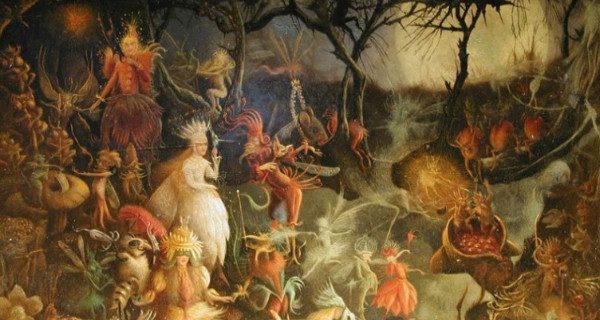
The tradition of “bobbing for apples” is also an old Celtic custom. Celtic military leaders were known as “bobbies” (hence the English term for police officers), and held in high esteem in their local villages. On Samhain all the young adults would gather to pull an apple out of a bucket of cold water and whoever did so the fastest got to have the local bobby stay in their house. This was really important because it was thought the local bobby could help the household fight off any fey or other creatures. (And as many bobbies were quite handsome, it was considered quite a coup for the winner!)
Both Halloween and Samhain have long been associated with ghosts, a pairing that only dates to the 19th Century. That’s when an American folklorist went into the hills of Scotland and asked about Halloween traditions. On that trip he misheard a quite pronounced Scottish brogue as “it’s a time for ghosts” when the gentleman actually said “it’s a time for goats,” alluding to the ancient traditions of Samhain.
No matter how you celebrate, I wish you and yours a most happy and blessed Samhain.
YULE
Yule is the ancient Germanic celebration of the Winter Solstice, and means “You will,” which was a phrase said with a lot of regularity this time of year.
“You will be cold.”
“You will get frostbite.”
“You will shovel the snow outside the mead hall.”
“You will drink mead.”
“You will get presents.”
And people did get presents, and had gotten presents on the Winter Solstice long before that too. 2000 years before the first Yule celebration the Druids used to gather at Stonehenge on the morning of the winter solstice. There, under a large pine tree set up in the middle of the stones (which is where the Christmas Tree comes from obviously), they would receive gifts from the Arch-Druid thanking them for all their hard Druid work.
According to the Roman historian Blimey the Elder the Arch Druid would:
“wear magnificent robes of red trimmed with white, his long white beard giving him the appearance of a sage who knew the mysteries well.”
When the Arch-Druid was done thanking his flock he would travel to all the villages around the magnificent monument on a sled pulled by a team of reindeer, handing presents out to all the good little pagan girls and boys. From this custom the legend of Santa Claus was born.

Winter time celebrations have generally featured a lot of drinking, and this includes Christmas. While generally thought to reference Jesus Christ (“Christ’s Mass”), a more analyzed breakdown of the word reveals something else entirely. Christ is actually a shortened version of the Greek word “Christo,” which is a grape varietal the Greeks used to make wine. “Jesus Christ” was literally “Jesus the Grape” and “Christmas” means “Day of the Grape.” It wasn’t so much about anyone’s birthday, but an excuse to drink wine.
No matter what you do or how you celebrate, I wish you and yours a most blessed Yule and/or a joyous Day of the Grape.
IMBOLC
I want to wish all my Pagan peeps out there a very blessed Imbolc. Imbolc is an ancient Celtic festival, which means “in side” from the Celtic “im” which translates as “in” and “bolc” which means “side of the bolt.” (Being indoors meant being on the “inside of the door bolt.”)
On Imbolc it was traditional for the Celtic Druids to visit the center of town and consult a local groundhog to see when Winter would end. Believing the groundhog to be the Celtic goddess Cerridwen, they would place the creature in front of a cauldron to make its prediction. After the groundhog’s prediction they would leave it offerings of mistletoe and whisky.
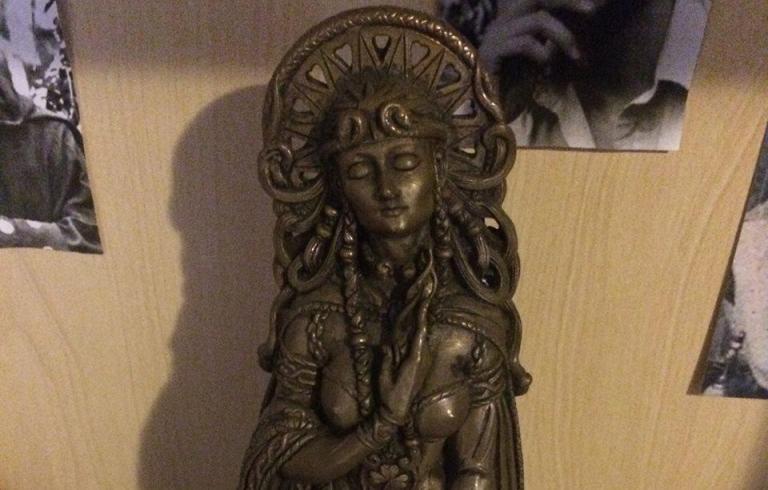
Because people were trapped inside with not a whole lot to do, many Imbolc traditions centered around love and sex. After the Christianization of the British Isles, Imbolc was turned into Valentine’s Day so the Pagans could continue their amorous ways without offending their new god.
No matter how you celebrate it, or don’t, I hope you have a blessed Imbolc.
This is not a slide show, but it is an incredibly long post, click the link below to finish up the Wheel of the Year!



